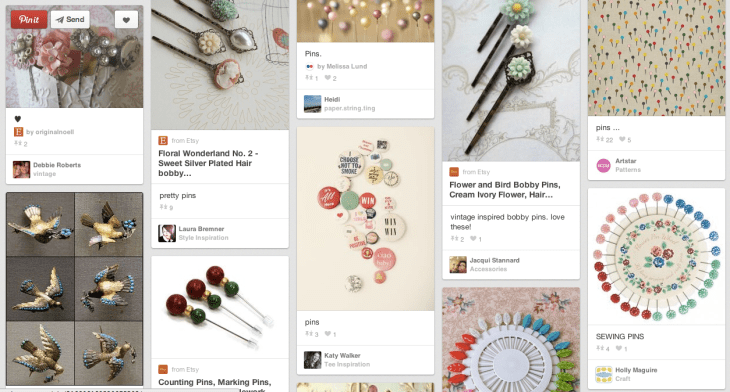When Pinterest frenzy was at a peak (adding users in record numbers; $1.5b valuation), and before Pinterest started to roll out its own tools for marketers, a rush of startups emerged that third parties could use to track how popular pins were across the network and related details. Now, some news of consolidation among them: Tailwind (formerly known as PinLeague) is buying PinReach from social media marketing firm Nervewire — which Nervewire originally acquired after one of PinReach’s co-founders joined Google and decided to sell up.
Danny Maloney, the co-founder and CEO of Tailwind (himself an ex-Googler and ex-Aoler respectively leading on YouTube and other video projects), says, tell us that the deal gives Tailwind a combined user base of 40,000 enterprise customers (including both free and paying), with some 30,000 of them coming with the acquisition. He says that this user base “runs the gamut” from small businesses to Fortune 100 enterprises, including brands like Walmart and Nike.
Terms of the deal were not disclosed but we understand that it’s non-cash and based on an earnout, depending on how well the service performs over the next couple of years.
Maloney says that it was PinReach’s customer base that was the primary interest. Tailwind, he tells me, had the more advanced platform, with the ability to track profiles and repins, influencer engagement, competitive analytics and ROI. All of the customers are getting gradually migrated to the Tailwind platform. There is a free usage tier at Tailwind, an the idea will be to try to upsell PinReach’s customers to some of Tailwind’s more sophisticated (paid) features.
So why the sale by Nervewire? Maloney tells me that originally the company purchased it to try to develop a new in-house product for existing enteprise customers to track Pinterest usage as part of its larger suite of offerings. Plans changed, however.
“When Nervewire acquired PinReach last year, our intent was to learn as much as we could about Pinterest as quickly as possible, so that we could better serve our clients and prospects,” said Natalie Dold, Nervewire’s Vice President Client Partner, in a statement. “We achieved that objective and are happy to see PinReach join the Tailwind family.”
Meanwhile, Tailwind for now is choosing to remain focused only on Pinterest rather than expanding to cover other social networks, for now at least. “We are already pulling in data from Facebook and Twitter for parts of our service, and cross-platform marketing is the future and how brands think,” he says, “but for now they also see the value of a strong niche service.”
On the subject of Pinterest finally starting to take more control of its own destiny as a marketing platform, he says that for now this is helping rather than hindering his business, and will help push Tailwind simply to innovate more. “Pinterest’s movements have actually helped us. The more Pinterest does the more people are interested in doing business there,” he says. “Having been onthe paltform side myself at places like YouTube, I know that every platform needs partners, so our response is to build the highest quality service that we can that adds value, or else we don’t deserve to survive. That’s the standard and if we do that, we will have staying power.”
In my opinion, very wise words — especially for a startup that is built around focusing on the third-party platform for its survival. It’s become something of a recurring theme these days among founders and their investors to beware the perils of building products that are too reliant on one other platform in order to function (one eloquent example here, courtesy of Loic LeMeur).
That should be especially poignant for Maloney and Tailwind. The company has been bootstrapped for the last 1.5 years, but it looks like they will be announcing a seed round soon to help fuel the next stage of growth, after seeing a slow start (it took 9-10 months, he says, to get to 200 customers) and recently accelerating, last month adding some 1,000 customers.
“We still are seeing a lot of investors who are interested in this type of concept,” Maloney tells me. “If you look at Twitter or Facebook, there were a certain number of companies that added value and built strong platforms and IP and proprietary data. Companies like Radian6 and BuddyMedia and Wildfire are all running on all cylinders.”
All this, by the way, is being done not from San Francisco or one of its Bay Area satellites, but Oklahoma City (with another office in New York). “I do miss the Valley a lot,” he tells me. “But it’s a lot of fun to be building in a small rapidly growing hub. I moved here 16 months ago and only found a handful of startups; now there are 80 or 90. It’s really opened my eyes.”
Fitting for a startup that focuses on a platform that itself found its earliest adopters in America’s heartland.
